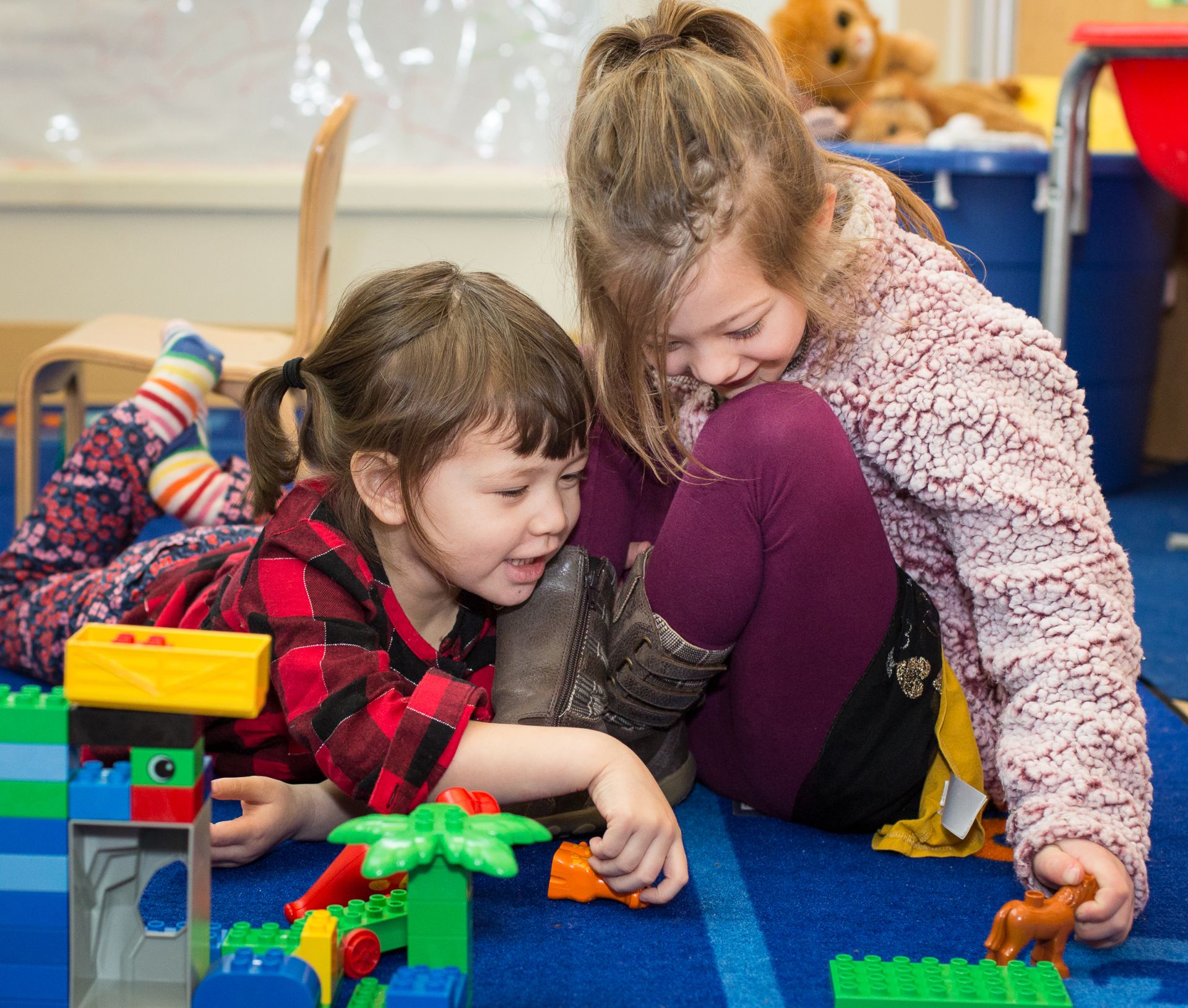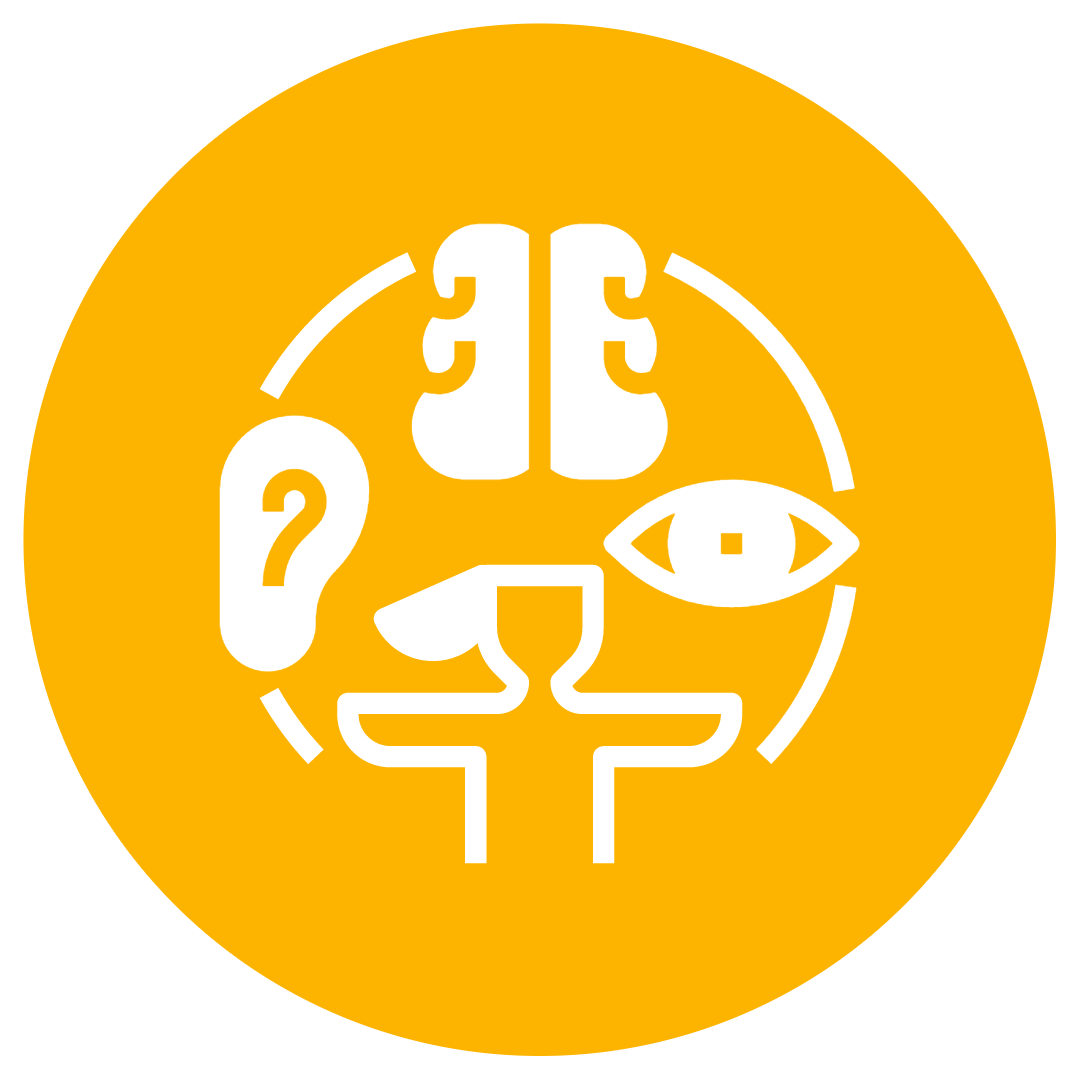Functions of Behavior - Understanding Challenging Behaviors

IMPACT’s mission is to increase access and decrease expulsion for children with disabilities and challenging behaviors in early childhood education. Kids are often expelled from preschool or child care due to behaviors that teachers and admin feel unprepared to support. But challenging behavior also presents the exact opportunity for skill building that children need. Kids don't grow and develop skills in silos, so if we were to remove a child with a challenging behavior from the classroom environment, we would deny them an opportunity to learn and practice the very
skills they need. In order to practice those important executive functioning skills like problem solving and frustration tolerance- the ones that will help them manage their behavior and resolve conflict with their peers, kids have to be in situations that require them to use problem solving and frustration tolerance- situations where those parts of their brain are activated. This means kids stay in the classroom, no matter how big or tricky their behaviors are. Inclusive early childhood educators get on the same team with children – even the toughest ones - as partners who can co-create a solution together. Instead of casting kids into the role of the “bad kid" or "difficult kid” or "kid that is just too much" in our minds, we can view children as needing help and then see ourselves as capable of providing that help.
Every time a challenging behavior happens, it's an opportunity to practice a skill. Kids learn important things when we allow for conflict and the space to work through their feelings, even if it’s messy in the moment.
Every time a challenging behavior happens, it's an opportunity to practice a skill. Kids learn important things when we allow for conflict and the space to work through their feelings, even if it’s messy in the moment.
What is Behavior?
Let's
start by getting on the same page with what we mean when we talk about
behavior. What is a behavior?
Behavior is what a child does or the actions they take. A child's observable actions (the behaviors we can see) are influenced by how they feel inside (their emotions, sensations, and memories).
This is true of all human behavior. What we do and how we act is a reflection of how we feel.
All behavior is communication. We yawn to say, "I'm tired." Babies cry to say, "I'm hungry." Children smile to say, "this is fun!"
All behavior happens for a reason. Children's behavior is trying to send an important message and communicate something about what's happening in their internal world. If we take the time to try to understand this message, we can figure out exactly how to support children who are exhibiting challenging behaviors.
Behavior is what a child does or the actions they take. A child's observable actions (the behaviors we can see) are influenced by how they feel inside (their emotions, sensations, and memories).
This is true of all human behavior. What we do and how we act is a reflection of how we feel.
All behavior is communication. We yawn to say, "I'm tired." Babies cry to say, "I'm hungry." Children smile to say, "this is fun!"
All behavior happens for a reason. Children's behavior is trying to send an important message and communicate something about what's happening in their internal world. If we take the time to try to understand this message, we can figure out exactly how to support children who are exhibiting challenging behaviors.
The Four Functions of Behavior
There
are four primary messages that kids could be communicating with their behavior.
You may hear them called the "four functions of behavior," and
they're categories that explain why a certain behavior occurs. You can think of
these as four different reasons a child might be behaving a certain way. Let's
look at each function in more detail and how they might show up in an early childhood education classroom environment.
Access: One primary function of behavior is getting Access to something they want. This means that the behavior helps a child get access to a preferred item (like a toy) or a desired activity.
Here's an example I think we can all imagine: when a child throws a tantrum in a store to get their parent to buy a candy bar they want – the child's behavior (throwing a tantrum) was because the child was trying to get access to the candy bar.
Here's a scenario you're more likely to encounter in an early learning setting: When one child grabs a toy out of another child's hands, the function or the purpose of the grabbing behavior was to get access to the toy.
Access behaviors can also look like a child whining because it's time to come inside from the playground, because the child would like access to more outside time. Access behaviors are a child's way of saying with their body "Hey, I want that" or "I want more."
Escape or Avoidance: Another function or purpose of behavior is Escape or Avoidance.
This means a child's behavior is communicating that they don’t want to do an activity, or they want to get away from a situation they find unpleasant. For example, if you've ever had a student in your classroom who suddenly needs to use the bathroom every day
when
it's time to clean up, that might be an avoidance behavior- the child is trying
to avoid cleaning up by going to the bathroom instead.
Escape behaviors are not always due to a lack of motivation. Children may also use escape or avoidance behaviors to let us know that the task they've been given is too hard. For example, throwing art materials on the floor because the art activity is too difficult, or walking away from their paper during a writing activity. These behaviors could be a child trying to avoid a task that is too difficult.
Kids aren't the only ones who do avoidance behaviors – we do these as adults too. If you've ever procrastinated doing work, or stuffed a piece of trash into an overflowing trash can instead of just emptying the bin, you know that most everyone does escape or avoidance behaviors to avoid doing something they don't want to do.
Escape or avoidance behaviors may be a child trying to say, "I don't want to do this" or "This is too hard."
Escape behaviors are not always due to a lack of motivation. Children may also use escape or avoidance behaviors to let us know that the task they've been given is too hard. For example, throwing art materials on the floor because the art activity is too difficult, or walking away from their paper during a writing activity. These behaviors could be a child trying to avoid a task that is too difficult.
Kids aren't the only ones who do avoidance behaviors – we do these as adults too. If you've ever procrastinated doing work, or stuffed a piece of trash into an overflowing trash can instead of just emptying the bin, you know that most everyone does escape or avoidance behaviors to avoid doing something they don't want to do.
Escape or avoidance behaviors may be a child trying to say, "I don't want to do this" or "This is too hard."

Sensory: Another function of behavior is Sensory. Kids engage in sensory behaviors because they want to experience a pleasant sensation or prevent discomfort.
Examples of sensory behaviors are stretching when they wake up from nap, rocking back and forth because it's calming, and covering their ears when it gets too loud. Children may engage in sensory
behaviors to meet their body's sensory needs or explore sensory aspects of their environment, like bumping into furniture because they want the sensation of pressure on their body, rocking back and forth because it's calming and soothing for their body, or covering their ears when it gets too loud.
Sensory behaviors are a child saying with their body, "This feels good," "I need to move my body," or "I'm tired, hungry, or don't feel good."

Attention: The
fourth and final common function of behavior is Attention. Attention
behaviors are a child's way of communicating that they want attention from
other people around them, such as teachers or other children. It's a
child's way of saying "Notice me," "Play with me," or
"Connect with me."
Attention can be positive or negative. When kids seek positive attention, others respond to the child's behavior with warmth and interest. For example, when a toddler reaches up for an adult, or a child tugs at your hand to get you to come play with them, or a child shows off the drawing they just made to a friend – this is all positive attention. Attention behaviors can also lead to negative attention from others, which is when a child does a behavior they know they're not supposed to do, to get a reaction. An example of negative attention is a child dumping out an entire bin of markers onto the floor (when they know they're not supposed to) and then turning to look directly at you as if to say, "I'm breaking the rules, do you see me?" Both positive attention and negative attention fulfill a child's need for attention. So, we want to give children enough positive attention that they don’t need to ask for attention through challenging behavior.
Attention-Seeking Is Connection-Seeking
Attention-seeking behaviors are an area that's often misunderstood. For young children, attention from an adult is very powerful, and also an essential part of healthy development. In fact, kids are so wired to seek adult attention that they sometimes engage in behaviors they know their caregiver will react to (even if they know it's not allowed), just to get attention of any kind. These kids are often labeled as

as "attention-seeking," as if it's a negative
thing. And that leads early childhood educators to respond in ways that are not helpful- either
trying to ignore the behavior or to disconnect from kids because they don't
want to reinforce attention-seeking behaviors. Educators often worry they
aren't supposed to "give in" to a child's attention-seeking behaviors. But
this is precisely what you should do!
When kids exhibit attention-seeking behavior, they're actually telling you exactly what they need. Kids don't hope for negative attention specifically. So, if it seems like a child is seeking out negative attention, giving them positive attention instead can meet the child's need while encouraging appropriate behavior. Attention-seeking behavior is the child saying with their body "See me!" or "Connect with me!" And a desire to feel seen and connected to is a vital, important need for young children that we don't want to ignore or dismiss.
Your mindset around attention-seeking behavior is critical. The next time you think a behavior is attention-seeking, try reframing it in your mind as "connection-seeking." Thinking of attention-seeking behavior as connection-seeking behavior helps us shift our view of this behavior a little more gently. You might not drop everything you're doing right at that exact moment to give a child the attention they're craving – that's not always realistic – but you might make a mental note to spend an extra moment of quality time with that child as soon as you're able. Human beings are social creatures, and wanting attention and connection from adult caregivers is a very normal and healthy part of development for young children. We just need to teach children appropriate ways to meet this need.
- IMPACT Team
10/3/2023
When kids exhibit attention-seeking behavior, they're actually telling you exactly what they need. Kids don't hope for negative attention specifically. So, if it seems like a child is seeking out negative attention, giving them positive attention instead can meet the child's need while encouraging appropriate behavior. Attention-seeking behavior is the child saying with their body "See me!" or "Connect with me!" And a desire to feel seen and connected to is a vital, important need for young children that we don't want to ignore or dismiss.
Your mindset around attention-seeking behavior is critical. The next time you think a behavior is attention-seeking, try reframing it in your mind as "connection-seeking." Thinking of attention-seeking behavior as connection-seeking behavior helps us shift our view of this behavior a little more gently. You might not drop everything you're doing right at that exact moment to give a child the attention they're craving – that's not always realistic – but you might make a mental note to spend an extra moment of quality time with that child as soon as you're able. Human beings are social creatures, and wanting attention and connection from adult caregivers is a very normal and healthy part of development for young children. We just need to teach children appropriate ways to meet this need.
- IMPACT Team
10/3/2023
If you're interested in learning more about the functions of behavior, check out these courses:
IMPACT™ content is developed by a multidisciplinary team and makes every effort to ensure that information provided reflect evidence-based, early childhood best practices. Providers should always follow local jurisdictions and other governing bodies rules and regulations when implementing any strategy or suggestion. Any actions, or lack of actions, are not the responsibility or liability of Northwest Center Kids – IMPACT™.
All content, including the presentation thereof on this web site, is the property of Northwest Center IMPACT™, and protected by U.S. and international copyright laws. You may not copy, reproduce, distribute, transmit, modify, create derivative works, or in any other way exploit any part of copyrighted material without the prior written permission from Northwest Center.
All content, including the presentation thereof on this web site, is the property of Northwest Center IMPACT™, and protected by U.S. and international copyright laws. You may not copy, reproduce, distribute, transmit, modify, create derivative works, or in any other way exploit any part of copyrighted material without the prior written permission from Northwest Center.
Connect
-
Seattle, WA
-
impact@nwcenter.org
-
NWC Home
Policy pages
Subscribe & stay up to date
Thank you!
Copyright © 2025
IMPACT™ content is developed by a multidisciplinary team and makes every effort to ensure that information provided reflect evidence-based, early childhood best practices. Providers should always follow local jurisdictions and other governing bodies rules and regulations when implementing any strategy or suggestion. Any actions, or lack of actions, are not the responsibility or liability of Northwest Center Kids – IMPACT™. All content, including the presentation thereof on this web site, is the property of Northwest Center IMPACT™, and protected by U.S. and international copyright laws. You may not copy, reproduce, distribute, transmit, modify, create derivative works, or in any other way exploit any part of copyrighted material without the prior written permission from Northwest Center.
